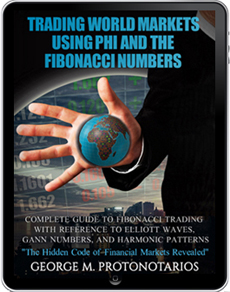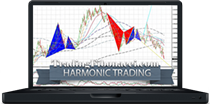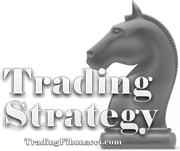Money Management (MM) and the Optimization of Position Sizing

Money management can be defined as the process of maintaining risk control by avoiding over-leveraged positions. It is a key component of any portfolio and essential for achieving long-term trading success.
The Importance of Position Sizing
The right position sizing is the cornerstone of effective money management. Deciding how much capital to risk on each individual trade is crucial for optimizing risk control.
What is Position Sizing?
Position sizing optimization refers to determining the ideal amount of capital to allocate to each trade in order to maximize returns while minimizing risk. This process involves calculating the optimal number of shares, contracts, or units to trade, based on a trader’s goals and risk tolerance. Proper position sizing allows traders to manage risk more effectively, remain active in the market over the long term, and potentially enhance overall profitability.
- Position sizing generally refers to the total volume of a trade position.
- Position sizing (%) represents the trade volume as a percentage of the total available capital.
Selecting Position Sizes
These are some key factors in determining and optimizing position sizes:
- The Available Capital
You should first adjust your position sizes based on the amount of direct capital available.
- Risk Tolerance
Not all investors share the same risk tolerance. You must determine how much you are willing to lose overall during a specific time period.
- Win Rate Combined with Reward/Risk Ratio
Your win rate affects the likelihood of experiencing losing streaks and your overall risk of loss. The reward/risk ratio indicates how much profit you can potentially earn from winning trades. {See below for more on why combining win rate and reward/risk ratio is essential.}
- Longer-Term Positions
The longer the time horizon, the more exposed you are to unexpected news and events. As a result, position trades (lasting several months) carry more risk than swing trades (lasting a few weeks). Time horizon becomes even more critical when trading assets with highly negative SWAP rates (interest charged for holding positions overnight).
- Popular vs. Unpopular Financial Assets
When trading over short time frames, always consider the cost of opening any new position. Less popular assets often suffer from low liquidity, leading to higher spreads between the ask and bid prices. Avoid overtrading assets with high spreads. In Forex, there are significant differences in spreads between major, minor, and exotic pairs.
The Reward/Risk Ratio (R/R)
The Reward/Risk ratio helps forecast a trading system’s ability to generate long-term profits.
Setting the Minimum Reward/Risk Ratio
Trades with a high Reward/Risk ratio are generally more favorable. As a minimum, you should aim for a Reward/Risk ratio of 2:1. Avoid trades that offer less than 2:1, and prioritize those offering more than 3:1. Many believe that this mindset distinguishes experienced traders from the rest.
Let’s look at an example:
You execute 10 trades with an R/R of 5:
(i) If you lose 8 out of 10 trades and win 2, you break even.
(ii) If you lose 6 and win 4, you double your initial capital.
(iii) If you lose 4 and win 6, you triple your initial capital.
In summary, selecting trades with a high Reward/Risk ratio allows room for error while still maintaining the potential for significant profit.
Reward/Risk Ratio – Tips for Avoiding Mistakes
To calculate the Reward/Risk ratio of a trade, you need two key price levels:
(a) A key support level to define your stop-loss (if going long; vice versa for short positions)
(b) A key resistance level to define your take-profit (if going long; vice versa for short positions)
The Right Attitude
(1) If the resulting Reward/Risk ratio doesn’t meet your target, skip the trade. Do not adjust your stop-loss tighter or expand your take-profit just to fit the ratio. Avoid manipulating support and resistance levels to justify a trade.
(2) Calculate support and resistance levels using the appropriate time frame. For swing trading, use H4 and H1 charts; for longer-term trading, use H4 and D1 charts.
(3) Avoid using fixed stop-loss and take-profit values without context. Many traders apply a fixed 50-pip stop without understanding why.
(4) Use pending orders to enter and exit trades. Professional traders rely on pending orders far more than market orders—these account for 70–90% of all open positions.
The Win/Loss Ratio and the Win Ratio
The Win/Loss Ratio
The Win/Loss ratio refers to the number of winning trades compared to the number of losing trades. It measures only the frequency of wins versus losses and does not consider the amount of profit gained or loss incurred.
The Win Ratio
The Win Ratio represents the percentage of winning trades out of the total number of trades. For example, a 60% win ratio means the trader won 6 out of 10 trades. Like the Win/Loss ratio, it focuses only on the number of wins and losses, not their monetary values.
Combining the Reward/Risk Ratio and Win Ratio
Combining the Reward/Risk ratio with the Win Ratio offers valuable insight for traders. The Win Ratio shows how often trades are successful, while the Reward/Risk ratio reveals the profit and loss potential of each trade. Together, they provide an objective method for evaluating the profitability of different trading systems.
For example, compare two systems:
(A) System A has a Win Ratio of 50% and uses a Reward/Risk ratio of 3:1
(B) System B has a Win Ratio of 40% and uses a Reward/Risk ratio of 6:1
Although System A has a higher Win Ratio, System B is significantly more profitable due to its greater Reward/Risk ratio.
Market Correlations and Money Management
Since the financial crisis of 2007–2008, global financial markets have operated more than ever as a unified area of risk and return. Market correlations refer to the relationships between two or more financial assets and measure how similarly different assets move.
- A positive correlation means two assets move in the same direction.
- A negative correlation means two assets move in opposite directions.
Correlations are expressed on a scale from -1.0 to +1.0, as follows:
+1.0 – two assets move in the same direction 100% of the time
+0.0 – two assets move independently with no consistent relationship
-1.0 – two assets move in opposite directions 100% of the time
Market Correlations and Money Management
Trading correlated assets in the same direction can result in excessively high market risk. Therefore, it is advisable to avoid trading highly correlated assets simultaneously.
The Strongest Market Correlations
These are some of the highest market correlations:
(1) EURUSD to GBPUSD (the strongest Forex market correlation: +0.9)
(2) EURUSD to AUDUSD and NZDUSD
(3) AUDUSD to gold prices
(4) Crude oil to USDCAD, CADJPY, USDRUB, and USDNOK
(5) US bond yields to USDCHF (USDCHF is inversely correlated with US bond prices)
(6) US stock markets to USDJPY
Compare Online Brokers for Worldwide Traders: » Online Brokers Comparison
■ Money Management and Position Sizing
George Protonotarios
TradingFibonacci.com (c)
▶️ FIND OUT MORE AT TRADINGFIBONACCI.COM












